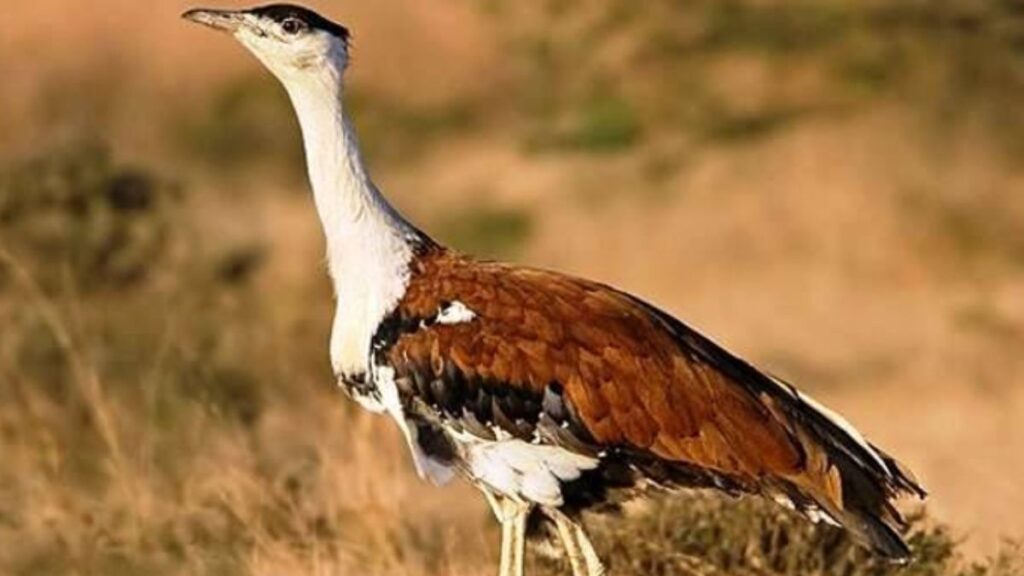Recent sightings of the critically endangered Great Indian Bustard (GIB) in Rajasthan have offered a glimmer of hope for the conservation of this iconic bird species. The recent spotting of twelve GIBs together in the Desert National Park (DNP) has highlighted the positive impact of conservation measures and the continued efforts to protect their habitat. Known locally as “Godawan” or “Maldhok,” the Great Indian Bustard holds immense ecological and cultural significance for northern and western India.
Current Population Status
The Great Indian Bustard is facing the threat of extinction, with only 173 individuals left in existence, of which 128 are living in the wild. The remaining GIBs are bred in captivity. Their primary habitat spans across regions in Rajasthan, Gujarat, Maharashtra, Madhya Pradesh, Andhra Pradesh, and Karnataka. Conservationists closely monitor the population to prevent further decline and continue efforts to restore their numbers.
Conservation Efforts Initiated
In 2013, the Rajasthan government launched a Rs 12.90 crore project aimed at conserving the GIB population. This project adopted a dual approach: protecting the birds’ natural habitat while enhancing breeding conditions. The state’s conservation efforts have led to the successful breeding of 45 chicks across two sites, Sam and Ramdevra, significantly contributing to the recovery of the species.
Habitat Protection Measures
The survival of the Great Indian Bustard is intrinsically linked to the preservation of its natural grassland habitat. Conservationists have worked tirelessly to improve these grasslands, ensuring that the birds have access to sufficient food, such as insects and desert fruits. Additionally, fenced areas have been established to protect the birds from predators like desert foxes and mongooses. Field staff patrol these areas to ensure the safety of the GIB population.
Breeding and Reproduction Strategies
One of the most significant challenges in GIB conservation is the bird’s nesting behavior. Since they lay their eggs on the ground, the eggs are vulnerable to predation. To combat this, conservationists have created fenced nesting areas, increasing the chances of successful reproduction. These protective measures have proven to be highly effective, allowing the population to grow steadily.
Recent Milestones in Conservation
A groundbreaking achievement occurred when scientists at the National Conservation Breeding Centre in Jaisalmer successfully hatched a GIB chick through artificial insemination. The male chick, named “Arambh,” is now four months old, marking a significant milestone in the conservation program. This successful hatch is part of the broader Bustard Recovery Program, a collaborative initiative involving several governmental bodies.
Future Directions for GIB Conservation
Ongoing efforts will continue to focus on habitat restoration, public awareness, and local community engagement. Collaborating with communities is essential for ensuring the long-term success of these conservation initiatives. Researchers and conservationists remain committed to the continued monitoring of the GIB population to guarantee that this majestic bird does not face extinction.
The Great Indian Bustard’s future is brighter than ever, thanks to the tireless conservation efforts and innovative breeding strategies that are helping to bring this iconic bird back from the brink of extinction.
Key Facts:
- The Great Indian Bustard, also known as the “Indian Bustard,” is classified as “critically endangered” by the IUCN since 2011.
- Rajasthan’s Desert National Park (DNP) plays a pivotal role in preserving the GIB’s habitat.
- “Arambh” is the first GIB chick born through artificial insemination.
- The GIB is primarily found in the Thar Desert region, with the population closely monitored in Rajasthan and other states.
Conclusion: The conservation of the Great Indian Bustard offers a beacon of hope for endangered species across India. With sustained efforts, collaboration, and innovative conservation strategies, the future of this majestic bird looks promising.
Also Read: Maha Kumbh Mela 2025: All You Need to Know About It
Disclaimer
This article is for educational purposes, focusing on the relevance of the topic for UPSC aspirants. Students should stay updated on further developments and refer to official sources for comprehensive preparation.
Follow Fusion IAS

